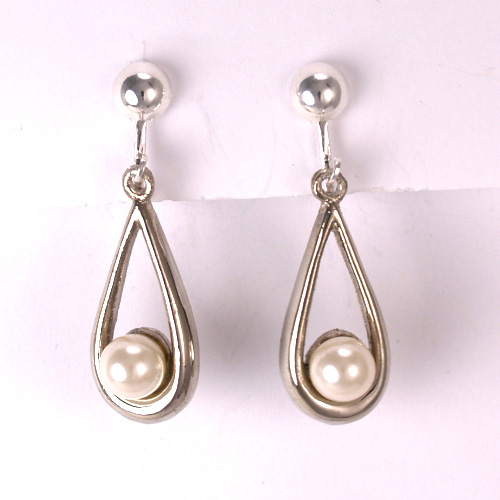 Pearls have long been one of the more exotic and treasured gems. After all, pearl jewellery comes from a unique source: a gem from the ocean.
Pearls have long been one of the more exotic and treasured gems. After all, pearl jewellery comes from a unique source: a gem from the ocean.
Over the centuries pearl jewellery has been sought after by many famous personages. For instance, since pearls represent purity, Queen Elizabeth I of England often was shown in official portraits wearing long ropes of pearls. Today brides often choose pearl jewellery for their wedding attire not only because of their symbolism, but also because of their beauty, especially with a white or ivory wedding gown.
One reason pearls were so prized historically was because they were so hard to find. Today the quality of cultured pearls rivals that of the finest rubies, emeralds, sapphires and diamonds. Cultured pearls are created when a “nucleus” of some sort is inserted into a mollusk in order for it to secrete the “mother of pearl” substance to cover the irritant. Culturing pearls for pearl jewellery is a delicate process that takes two to three years. Furthermore, the pearls that result may or may not be desirable for jewelry.
In other words, cultured pearls may result from science helping nature, but it’s still nature that has the final say.
Don’t think of cultured pearls as “fake, ” either. The difference between cultured pearls and natural pearls is simply that the mollusk was helped to create a cultured pearl, whereas a natural pearl results from a random irritant finding its way into a mollusk at sea. In additional to cultured pearls, the three natural categories of pearls are Akoya, Tahitian and South Sea.
Top quality pearls will have a high luster and iridescence. Color is also important when selecting pearl jewellery. The most desirable white pearls have rosy overtones, while cream-colored pearls are more common. There are also many natural colors in pearls such as black, gray, blue, gold, pink and even green. However, be sure to have colored pearl jewellery checked by a professional gemologist to make sure the pearls aren’t dyed, which decreases their value.
It’s important to know the differences among pearls when choosing pearl jewellery. The qualities to consider when choosing pearls are the thickness and quality of the nacre (outer layer), color, luster, surface perfection, size and shape. The most important quality for pearls is the nacre, because its size and thickness will determine how long the pearl will last.
Unlike jewels from the earth, gems from the ocean are not everlasting. Saltwater pearls with good nacre will last about 150 years; freshwater pearls will last about 70 years before they wear away.
Pearls can be harmed by an acid environment, so always store pearl jewellery away from other jewelry, preferably in a separate box with a soft interior to avoid scratches.
If pearls are not your thing then look at our gorgeous range of fashion jewellery hair accessories